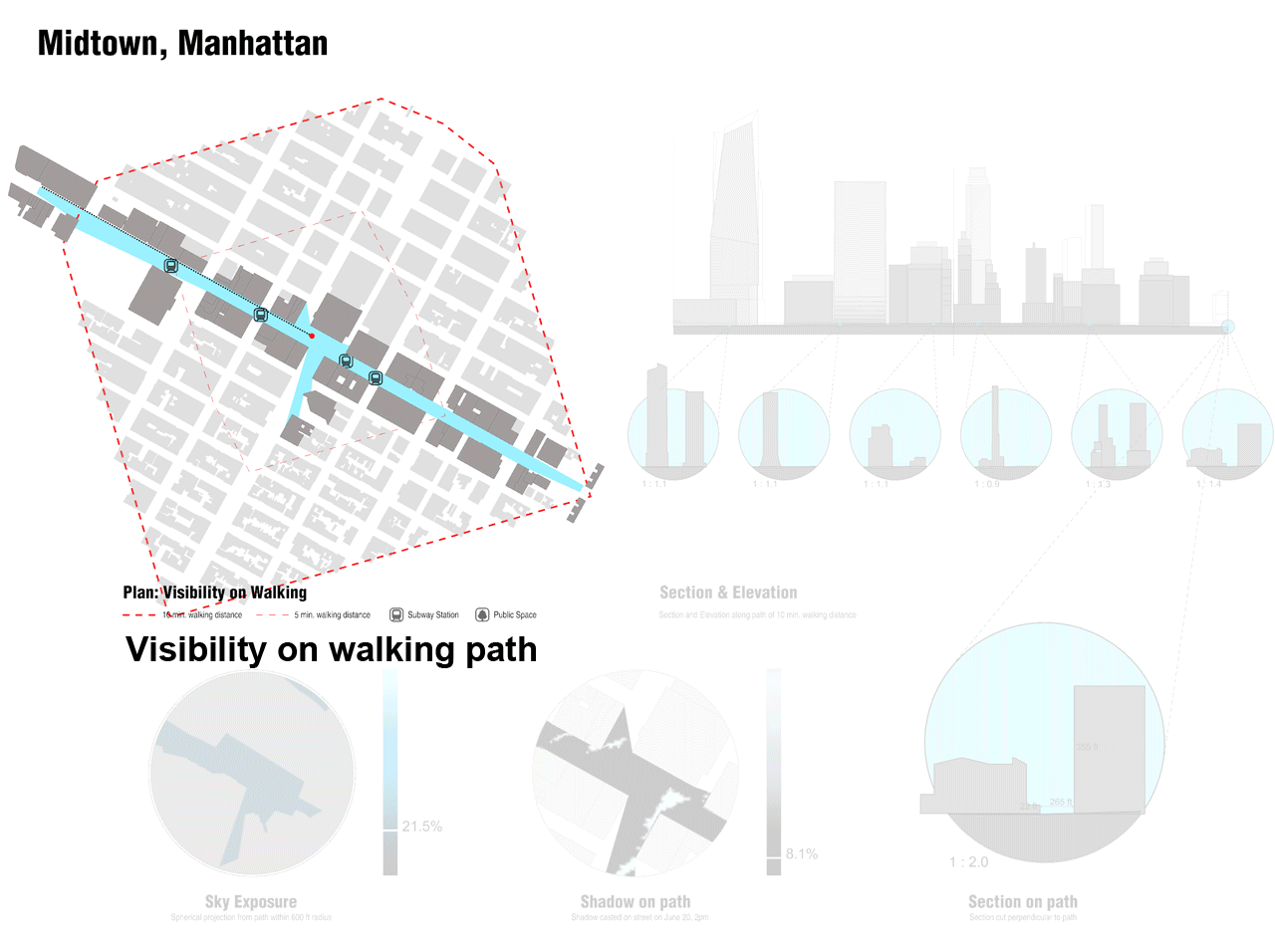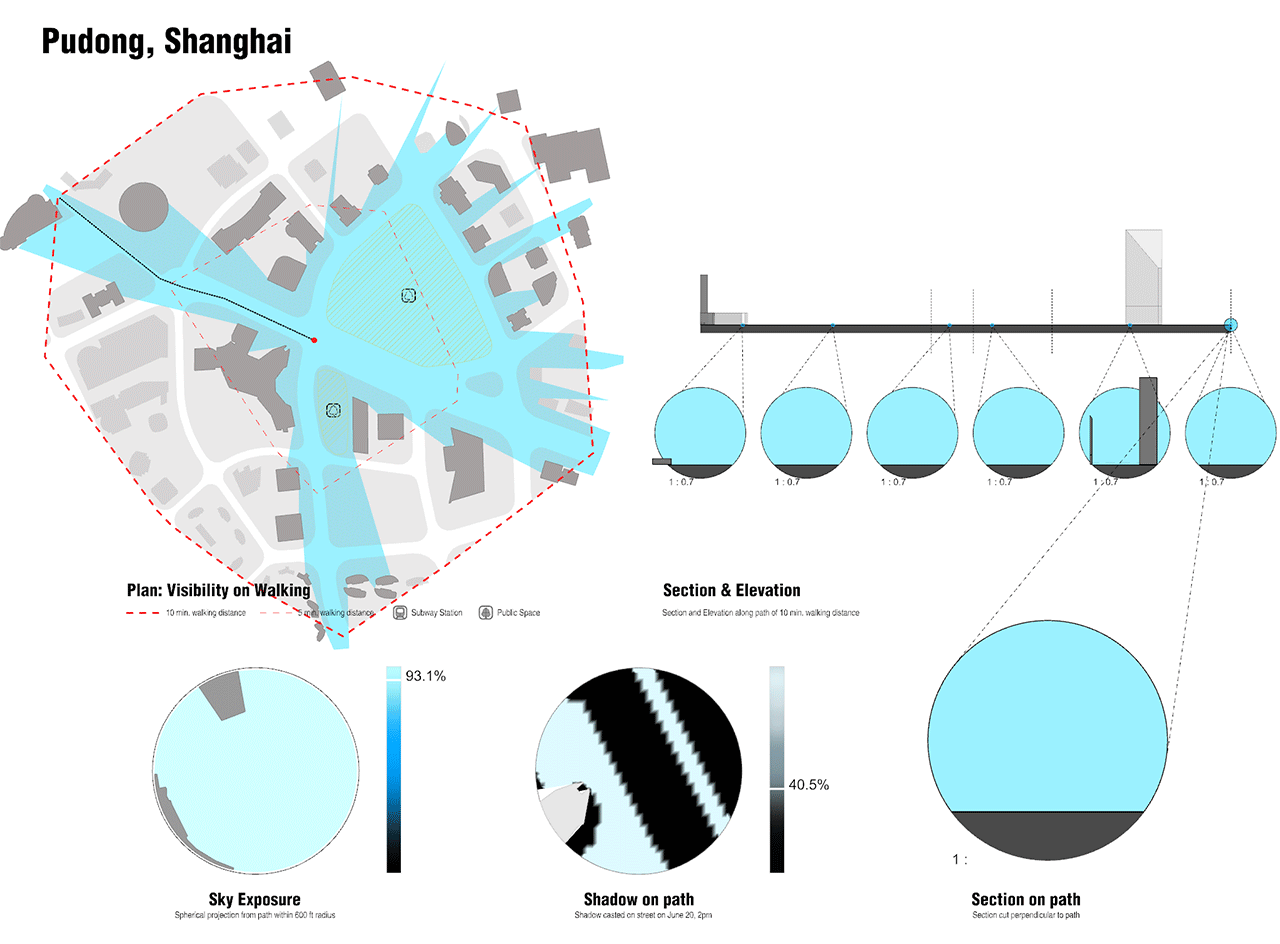Pedestrian visibility along a ten min walk in NYC, London and Shanghai. Light blue indicates the view at the current point along the path. Dark blue indicates what was previously visible. The red dashed line indicates the extents of a ten minute. Larger images at the end of the post.
“Planning typically comes to an abrupt halt at the the inside of the facade, and the exterior is merely packaging. However, Pedestrians still need to be able to walk around cities, urban structurs continue to form the walls of public space, and people continue to have close encounters by buildings.”
While the experience of a pedestrian walking through a city is inherently subjective, the physical characteristics that define it are not. As Gehl observes, the pedestrian's experience exposes the character of a city through his contact, or lack of contact, with the surfaces of buildings. These characteristics can be measured and quantified, informing our understanding of how the built environment shapes the perception of place.
We created an analysis system that quantitatively exposes the different affects urban morphology has on pedestrian experience, beginning with a pedestrian's field of view.
The analysis dashboard shows the visible area from ground level with a Sky Exposure mask, shadow plan, and street section at a point on along a walking path. As the point moves along the path we can see variation of the Manhattan street wall, the effects of building tower setback on the public realm. Also we see the serialized patterning of Manhattan's hallmark street canyons, giving any point on any street explicit direction and a perspective that disappears into the distance. At every cross street there's a moment of discovery, where an entirely new view is suddenly exposed, an experience that has become intensely Manhattan. This exposure how the grid of Manhattan hides density. It is always visible on the periphery, and never directly in front.
We conducted this same analysis on walking paths of the same length in Covent Gardens in London, and Pudong in Shanghai to see what characterizes the pedestrian experience there.
As expected, the street scapes of each urban area are vastly different. Covent Gardens' short view corridors are short and sporadic, the result of narrow streets and irregular block patterns. There is never an infinite vista like in Manhattan, the pedestrian is always confronted with buildings on all three sides making density difficult to hide. The Pudong pedestrian experience offers wide un-encumbered views across expansive urban blocks, rendering the buildings as objects.
Visualizing pedestrian experience in several dimensions and perspectives exposes the results of each city's decisions urban design management of density, and speed of growth sparking conversations about what it is that truly makes our cities different. The metrics gained from this type of analysis can inform the design of new public spaces, for example, by combing the pedestrian view of NYC with the sky exposure of London with the street section of Shanghai.









